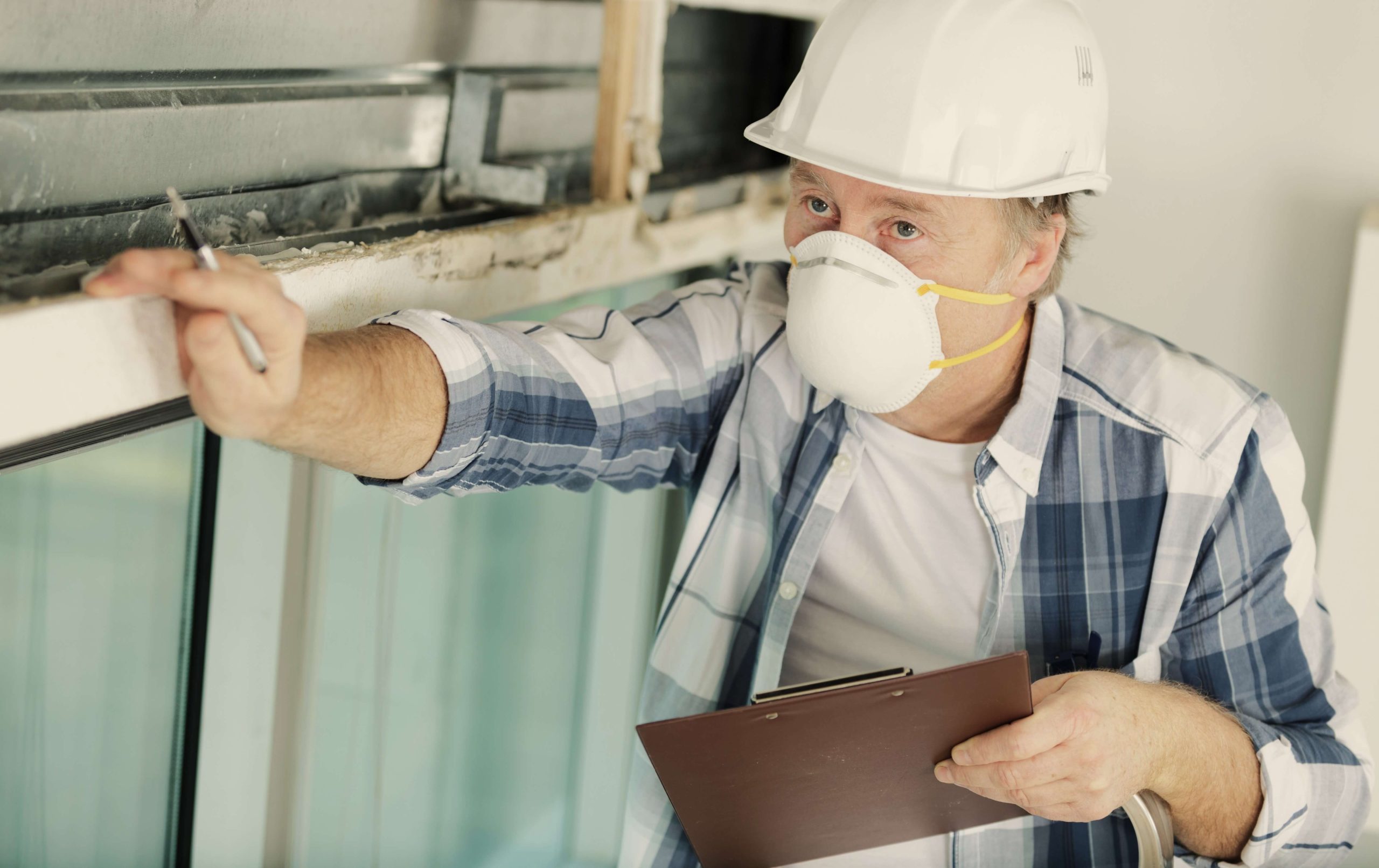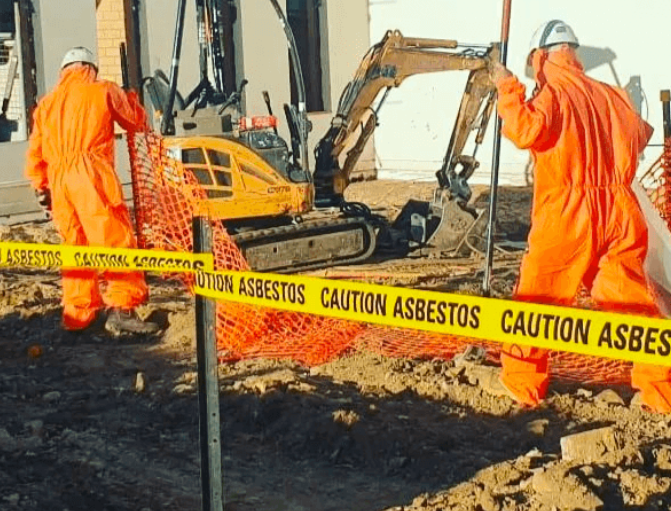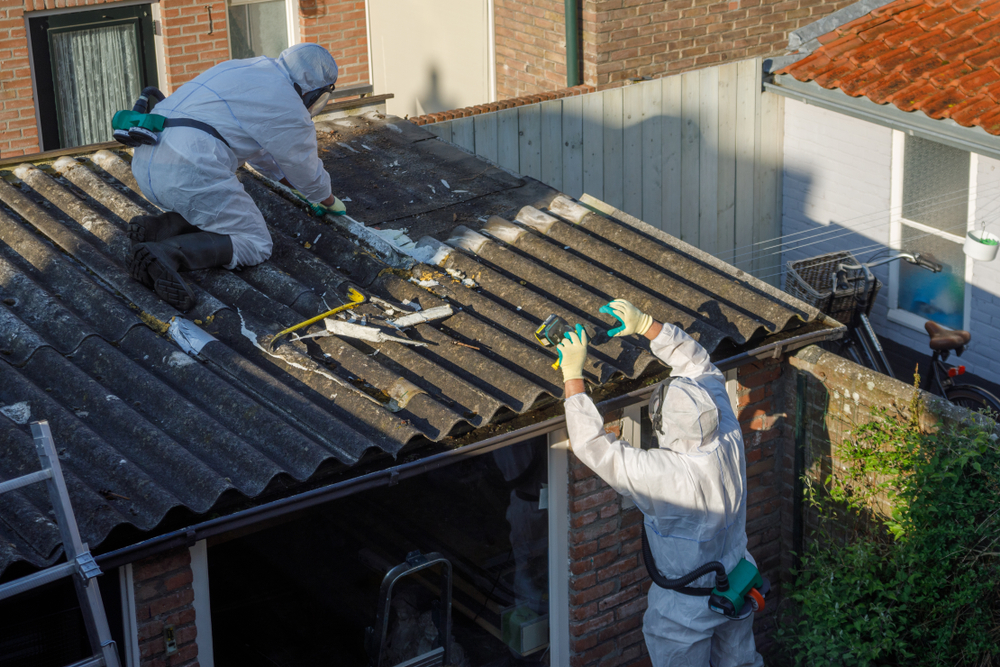
Australia is a land of architectural diversity, with many older homes that reflect the nation’s rich history and evolving design preferences. These vintage residences, often exuding charm and character, are a testament to the craftsmanship and style of bygone eras.
Homeowners are increasingly drawn to the allure of restoring and renovating these historic dwellings, infusing modern amenities while preserving their classic essence.
However, beneath the ornate cornices, behind the aged wallpaper, and under the rustic tiles, there lurks a silent and potentially deadly adversary: asbestos.
Once hailed as a ‘miracle material’ for its durability, fire resistance and affordability, asbestos, when disturbed, presents significant health risks that every renovator should be aware of.
This guide is dedicated to homeowners in Australia, offering insights and precautions for safely navigating the challenges of asbestos during the renovation process.
Asbestos, derived from a group of naturally occurring fibrous minerals, was once dubbed the ‘wonder material’ of the construction world, especially during the mid-20th century due to its heat resistance, strength, and insulating properties.
From the 1940s to the late 1980s, many Australian homes were constructed using asbestos-containing materials (ACMs). Fibro sheeting, widely used for wall and ceiling linings, is one prominent example. On top of this, roofing, guttering, and even certain types of vinyl flooring contained asbestos. This material’s extensive application was due to its cost-effectiveness and perceived durability.
But why was asbestos so prevalent in Australia compared to other parts of the world? A significant reason lies in the nation’s own asbestos mines, with places like Wittenoom in Western Australia becoming synonymous with asbestos production. The domestic availability of asbestos meant that it was both economical and accessible for construction needs.
However, by the late 1980s, the adverse health effects of asbestos fibres, when inhaled, became undeniable. Recognising the looming health crisis, Australia took steps towards phasing out its use, culminating in a complete ban by 2003. Today, homeowners are often unaware of its presence in older homes, making renovations a potential risk if not approached with caution.
Asbestos, for all its practical applications in the construction industry, harbours a deadly secret. When materials containing asbestos are damaged, disturbed, or age over time, they can release microscopic fibres into the surrounding air. These fibres, when inhaled, can become lodged deep within the lungs, leading to a range of serious health conditions over time.
The primary threat is asbestosis, a chronic lung disease resulting from prolonged exposure to asbestos fibres. It causes scarring of lung tissue and can lead to severe respiratory distress. Another major concern is mesothelioma, a rare and aggressive form of cancer directly linked to asbestos exposure. The latency period for mesothelioma can be extensive, often manifesting decades after the initial exposure. This makes early detection challenging and the prognosis is often bleak.
In addition to these, prolonged exposure to asbestos fibres can also increase the risk of lung cancer and other lung-related ailments. Even minimal or short-term exposure, especially during home renovations where asbestos dust might be unwittingly released, can pose significant health risks.
The challenge with asbestos is its insidious nature. Symptoms might not manifest immediately after exposure. Years, even decades, can pass before the health implications become apparent, making it essential for homeowners to understand these risks when considering renovations. While Australia has seen a decline in asbestos-related diseases due to regulations and awareness campaigns, any inadvertent exposure remains a grave concern.

Recognising where asbestos may be lurking is the first step to ensuring safety during renovations.
The widespread use of asbestos means that it can be found in various areas of older homes. Here are some of the common places where asbestos could be present:
While these are common areas where asbestos may be present, it’s worth noting that its visual identification can be challenging. Materials might appear safe, but if they date back to the peak asbestos era, there’s a chance they contain it. If you’re unsure, the safest route is to assume it’s present and take necessary precautions. Better yet, engage licensed professionals to survey the home. They can take samples for testing and determine conclusively if asbestos-containing materials are present.

The allure of DIY renovations can be enticing, but when it comes to potentially stumbling upon asbestos, personal endeavours can quickly turn hazardous.
Here’s why considering professional intervention is crucial:
Minimising Disturbance
One of the primary risks of renovating older homes is the unintentional disturbance of asbestos materials. Simple tasks like drilling a hole, sanding a wall, or even pulling up old tiles can release harmful asbestos fibres into the air. While certain safety measures like wetting an area before work can reduce dust, there’s no surefire way for amateurs to prevent fibre release completely.
Recognising Hidden Risks
Asbestos doesn’t always present itself in obvious forms. Professionals have the training to identify not-so-obvious asbestos-containing products, ensuring they’re handled correctly.
Safety Protocols
Licensed professionals adhere to strict safety protocols, which include:
– Using appropriate Personal Protective Equipment (PPE).
– Sealing off the work area with plastic sheeting to contain any potential asbestos dust.
– Employing specialised air filters, like HEPA filters, to capture airborne fibres.
– Safe containment and disposal of asbestos waste in compliance with Australian regulations.
Mitigating Long-Term Risks
An immediate asbestos disturbance might seem contained, but its ramifications can linger. Residue might settle on furnishings, carpets, or HVAC systems, posing long-term health risks. Professionals ensure a thorough cleanup, reducing potential future exposures.
Peace of Mind
Perhaps the most significant advantage of working with professionals is the peace of mind they offer. Knowing that your home’s renovations comply with safety standards and that you and your family are protected from asbestos exposure is invaluable.
In summary, while it’s tempting to tackle home renovations head-on, the potential risks associated with renovating a house with asbestos should be a strong deterrent. By investing in professional guidance and intervention, you’re not only ensuring the structural integrity of your renovation but, more importantly, the health and well-being of all occupants.

While the allure of renovating older homes is undeniable, it’s vital to approach the task with caution and knowledge. Asbestos exposure can have long-term health implications.
If you’re planning on performing renovations in a home with asbestos ensure that you have asbestos removed first by a licensed asbestos removalist, like us here at Asbestos Australia. Our services are available throughout Melbourne, Victoria and Australia. Call us on 03 9704 2952 or get in touch with us here.
Posted By: Tommy Clappers
Leave a Reply